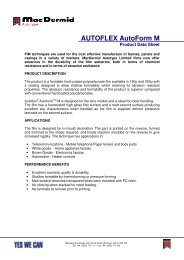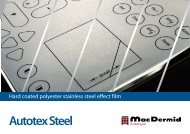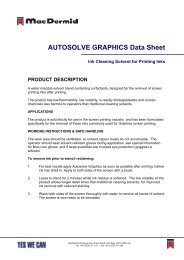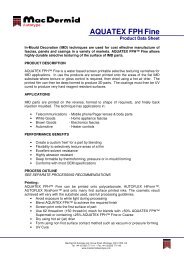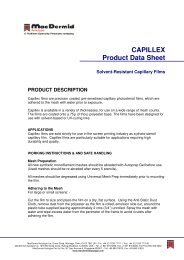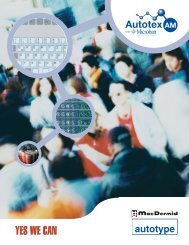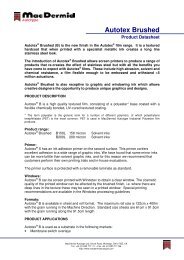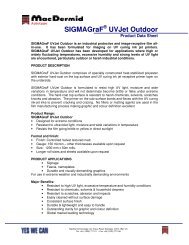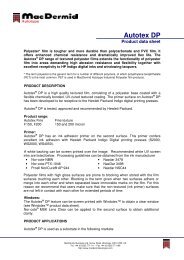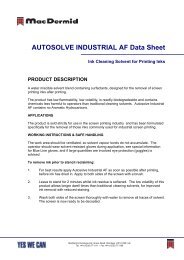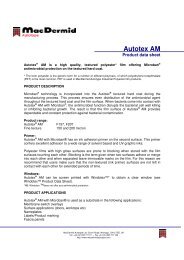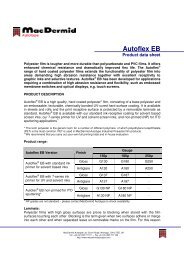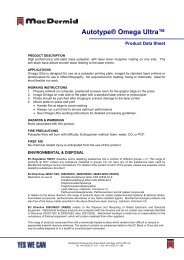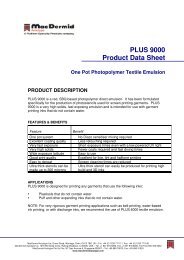Screen E-Book (.PDF) - MacDermid Autotype
Screen E-Book (.PDF) - MacDermid Autotype
Screen E-Book (.PDF) - MacDermid Autotype
- No tags were found...
You also want an ePaper? Increase the reach of your titles
YUMPU automatically turns print PDFs into web optimized ePapers that Google loves.
Wrong ink - Too much viscous drag (with a large snap-off (off-contact))Splatter (dark spots on the whitebackground) from a solid area (offto the left) that flew a long wayWe used a very viscous (non-reduced) ink.As the squeegee went along, the drag onthe mesh from the ink was too large andthe mesh was slow to release. Towards theend of the print, the mesh came out of theink in a sudden rush. The 1-2-3 shows thatthere is a “liquid bridge” underneath themesh. If this breaks in a gentle manner,the drop of ink formed by the break simplygoes down onto the print. With a violentrelease the drop can fly off in all directions.These ink particles were a few mm awayfrom the edge of a solid printed block.It’s easy to imagine that a viscoelastic(“stringy”, “tacky”) ink would give not individualdrops like these but “cobweb”strings.TeardropsAlthough these were very easy to see onthe print, it was impossible to get a goodphoto of them. You’ve probably seen themyourself –blobs of ink (a few mm diameter)often in a straight line, randomly over theprint. We made them appear by using atacky ink and a weak squeegee. The combinationmeant that during the squeegeestroke, ink built up on the wrong side of thesqueegee – partly through hydroplaning,partly because viscoelastic inks naturally“climb” under shear. After a while, there isenough ink built up on the squeegee thatit can drop off and fall through the meshonto the print – giving the characteristicteardrop shape:48



